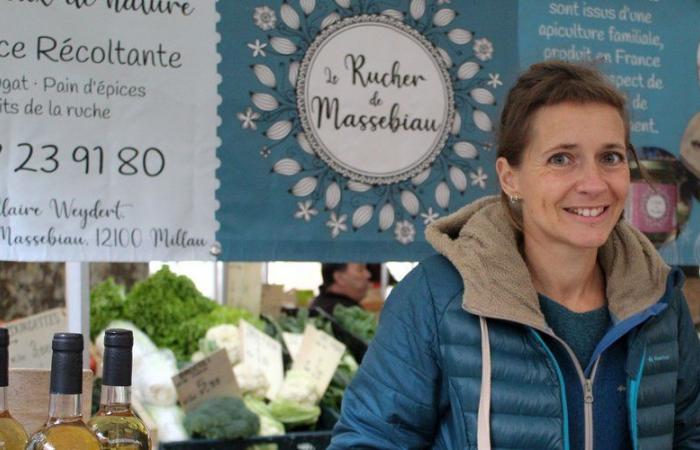the essential
Claire Weydert has been a beekeeper since 2018. A passionate profession that lives to the rhythm of flowering and natural threats.
It all started with coffee. Claire Weydert became passionate about bees more than ten years ago when she was in the world of plant experimentation. During conversations with work colleagues, during breaks, the subject regularly comes up on the table. He was given a first book on foragers. Then, she got her first apiary. “As soon as I had a garden, I had my beehive. Then, from one hive, I wanted to divide it to have two. This is the beginning of what she calls her “life change”.
She swaps her engineering hat for that of a beekeeper. A few boxes later, she arrived in Aveyron. And, when she rewinds the cassette, the young mother remembers the first months, here in the hamlet of Massebiau, in 2018. In her living room, tea in hand, she activates the play button and lets the memories pass before her eyes. The transhumance of hives. It is towards this system that Claire Weydert turns as soon as she arrives. A method that involves “a lot of energy and diesel,” she confesses. “But which makes it possible to follow the flowerings since each apiary moves between two and three times a year”. Depending on the year, it can then offer a range of six to eight honeys.
And there is something for everyone. “We can find poly-floral honeys like that of Larzac. Then others, mono floral, like lavender or chestnut honey,” says the enthusiast. These trips require well-established logistics. With more than 200 colonies, strategically placed both north of Montpellier, near Salagou and even Faugères, Claire Weydert must operate at night to be sure that all the bees have returned to the hives. “It’s not the most prudent thing,” admits the beekeeper, although well equipped.
The physical aspect of the job and the significant working hours, particularly in season, could darken the picture. Since in fact, from March until the month of October, during wintering, Claire Weydert does not stop.
Hornets, varroa: facing the threats
Particularly to protect its working tool: the hives. In the profession, the threats are numerous. For the beekeeper, two should be taken particularly seriously. Starting with varroa. A parasitic mite of the bee, it reproduces in the brood of the hive, that is to say all the nymphs, larvae and eggs protected by the workers. “They are everywhere all the time,” according to the beekeeper whose goal is to keep parasitism rates as low as possible so as not to harm the production capacity of the bees. “It is a virus vector. If it develops on bees who are going to spend the winter, they will not be able to resist the cold, explains the former engineer who puts things into perspective. With the treatment I use, which is organic, I can be satisfied not to see many developing in my hives. »
Another threat is the Asian hornet. And there, the beekeeper is not so optimistic. The impact of hornets is especially felt around the end of summer until the first frosts, sometimes forcing a major reorganization. “Concretely, this forces me to transhume certain apiaries. If it weren’t for the hornet, I would leave them in place for the winter. » In question, the insect’s ability to weaken the hives, or even kill them when it takes live bees to bring them back to the nest. “And when the colony is weak, it can enter the hive, eat the bees’ reserves and even go and help itself in the hive,” laments the beekeeper. Despite these few gray areas in the frame, Claire Weydert’s taste for the world of bees was not piqued. Fascinated by the “collective intelligence” of her foragers, she takes pleasure in observing each of them. Sometimes scouts, sometimes workers.






